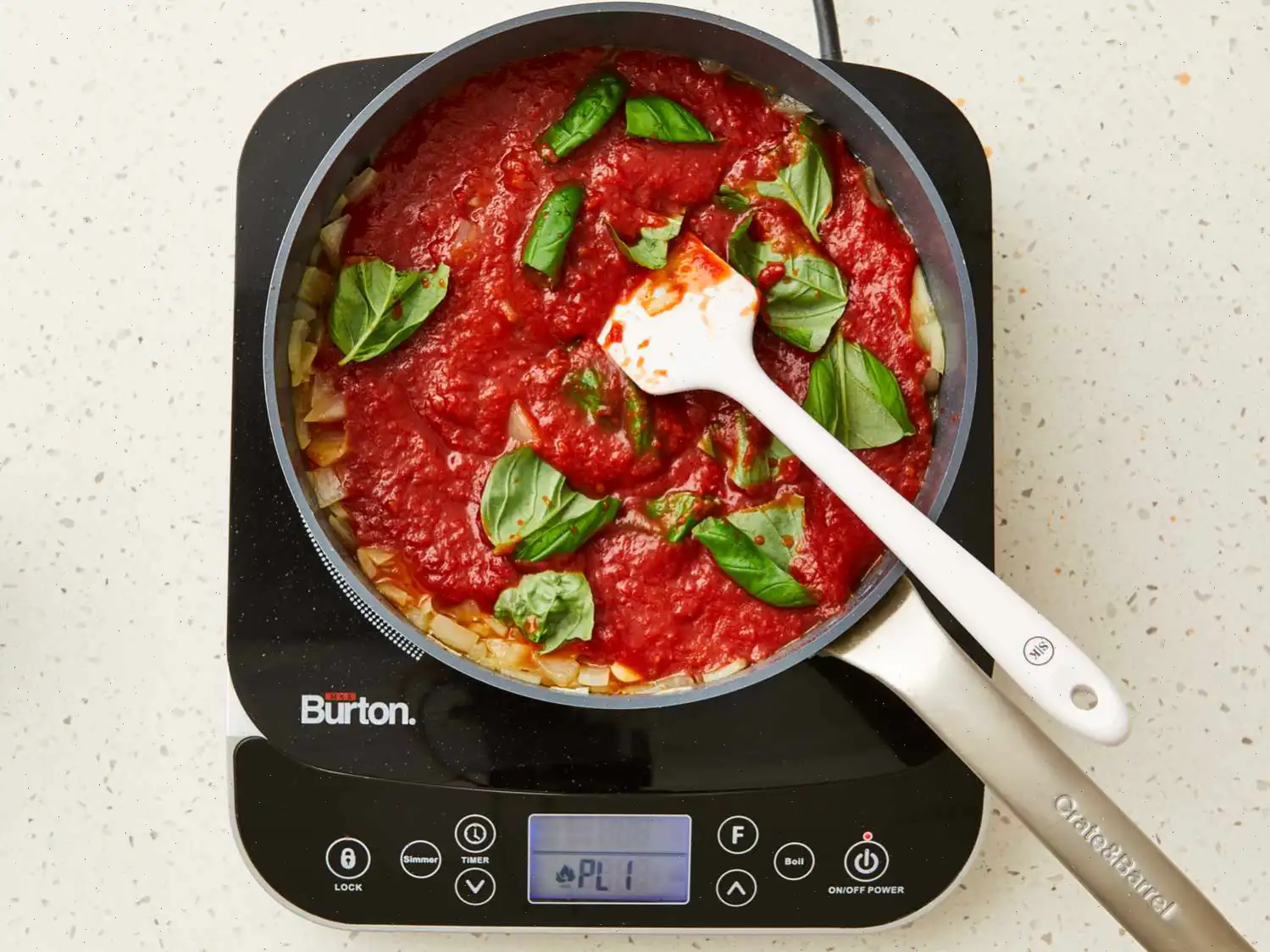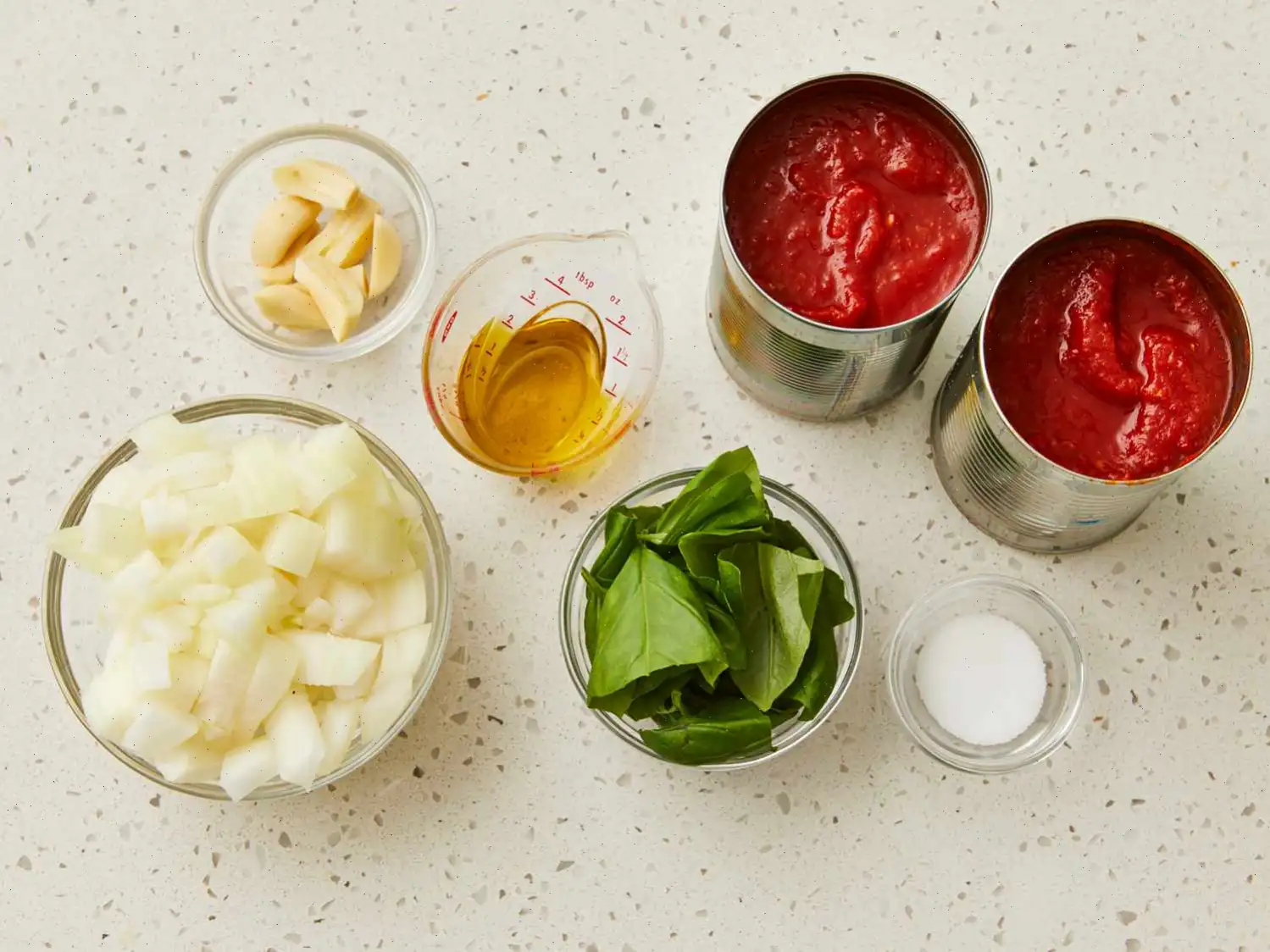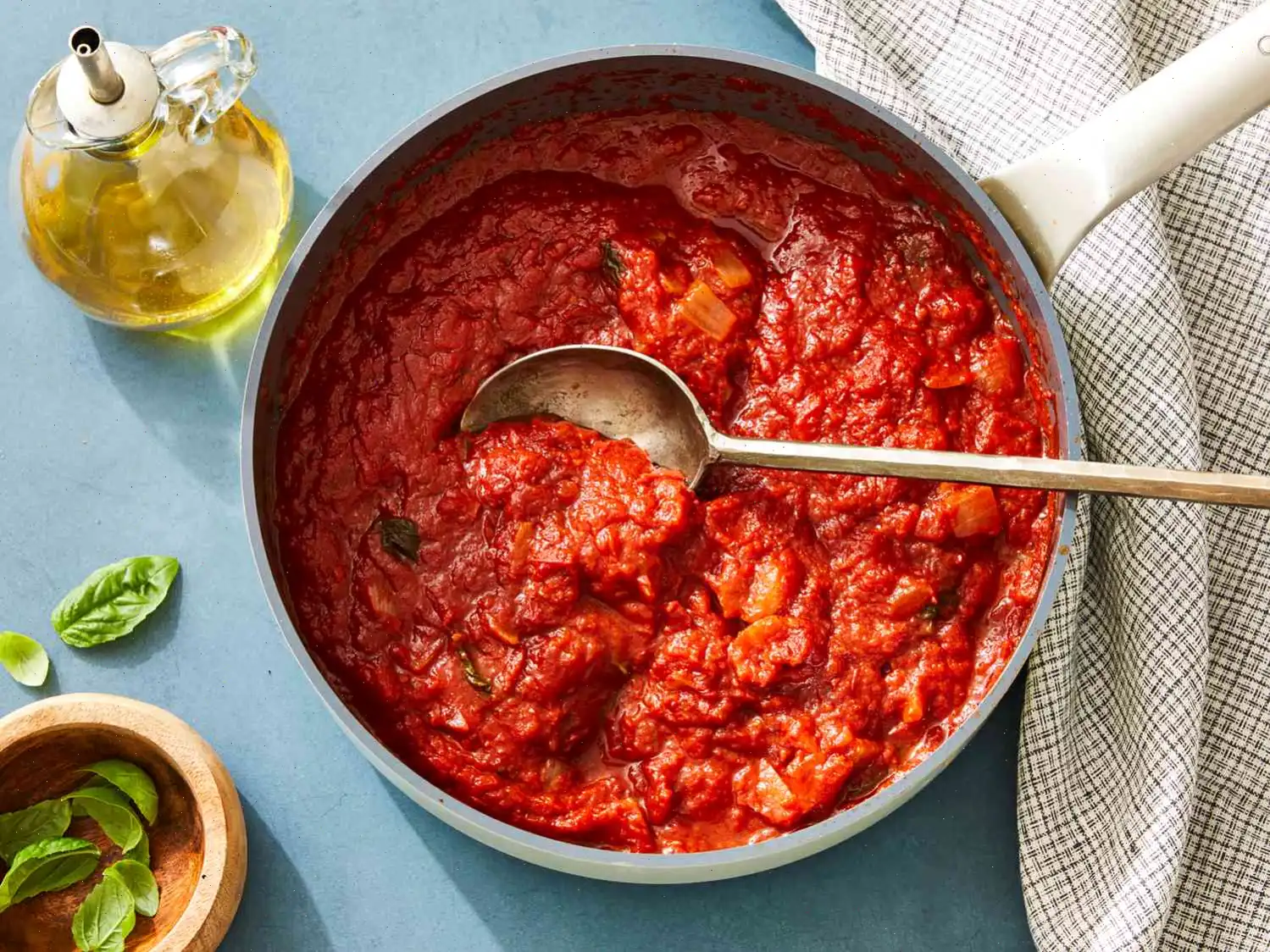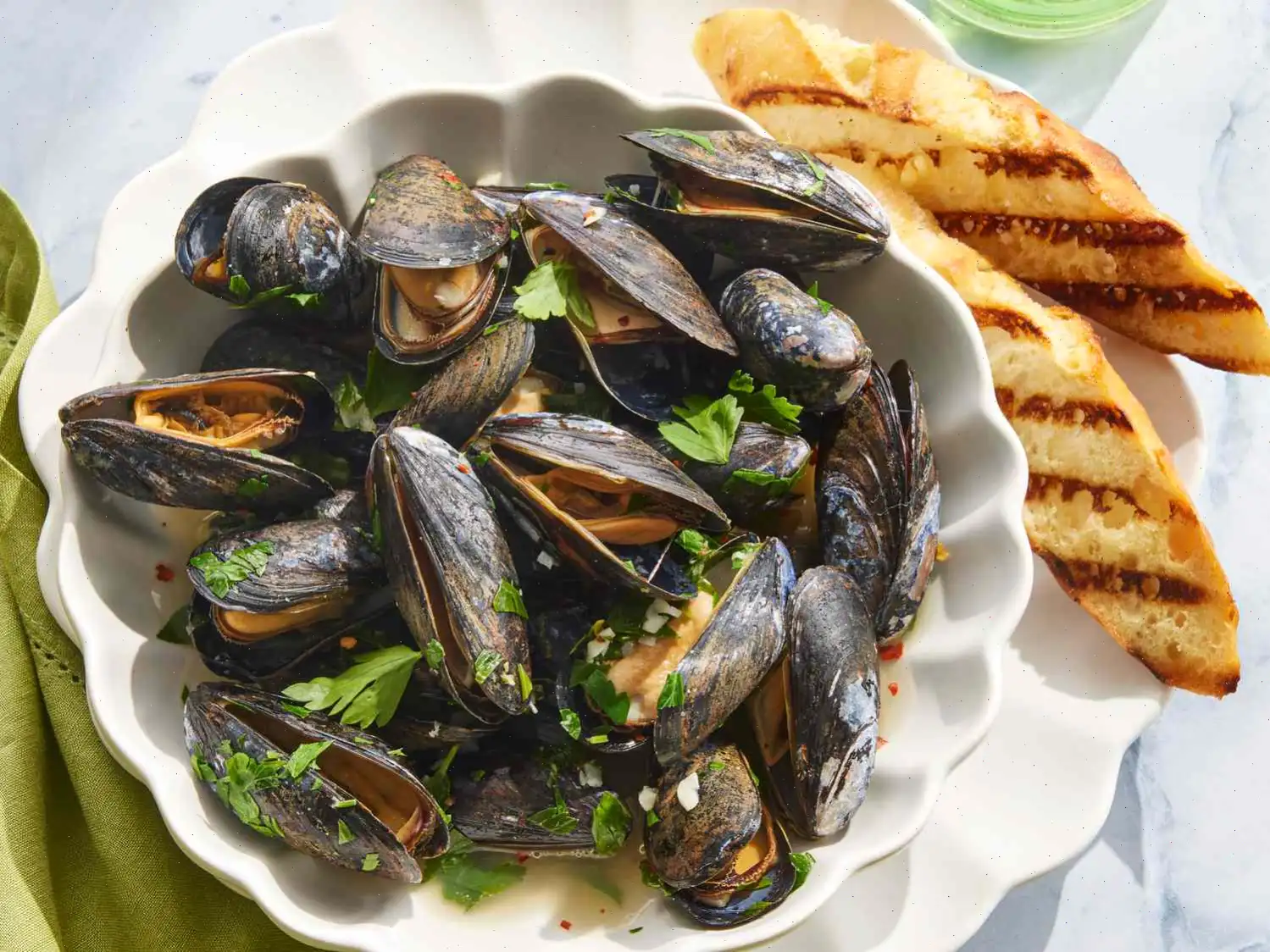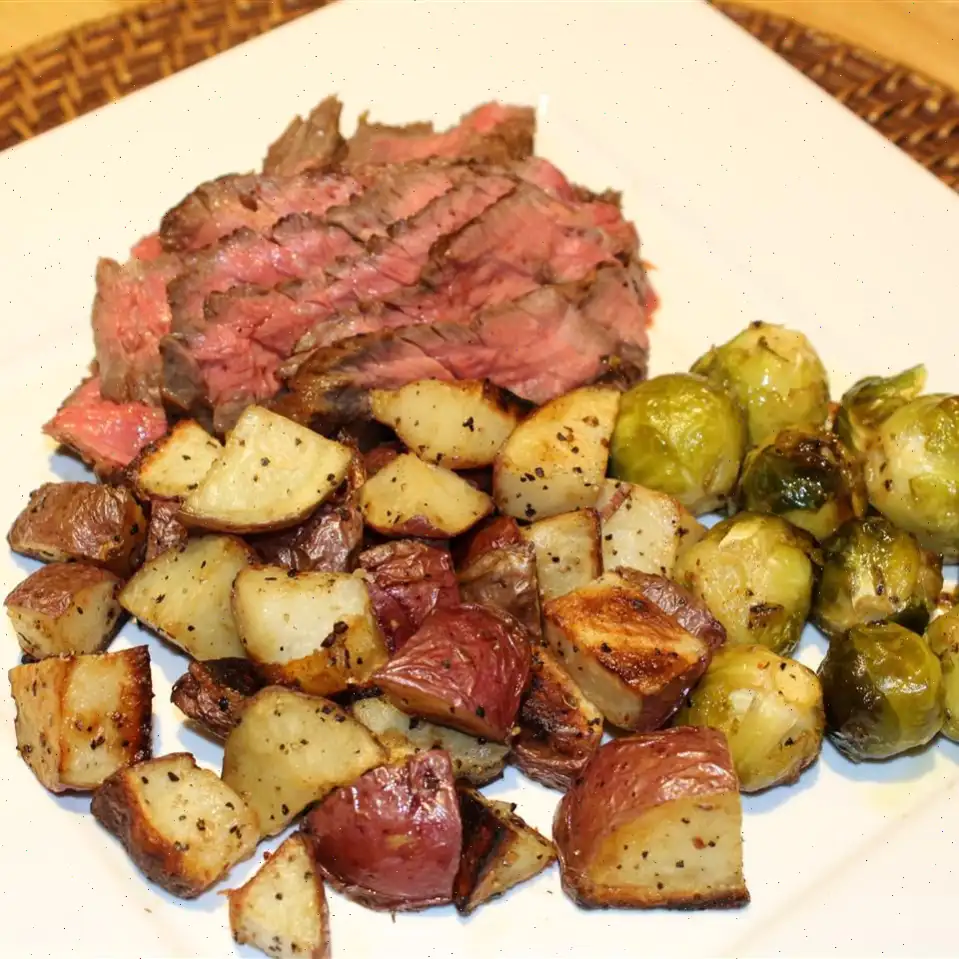
Sugo di Pomodoro (Authentic Italian Tomato Sauce) Recipe
Ingredients
- 2 tablespoons extra-virgin olive oil
- 1 onion, chopped
- 4 cloves garlic, halved
- 2 (14 ounce) cans passata (crushed tomatoes)
- cup fresh basil, torn in half
- Salt to taste
Directions
Step 1: Gather all ingredients.
Step 2: Heat olive oil in a saucepan over low heat.
Step 3: Add chopped onion and halved garlic cloves. Cook and stir until the onion becomes soft and translucent, about 5 minutes.
Step 4: Add the passata (crushed tomatoes), basil leaves, and salt to the saucepan. Stir well to combine.
Step 5: Cover the saucepan and allow the sauce to simmer over medium heat, stirring occasionally. Continue simmering until the tomato sauce has thickened, about 20 minutes.
Step 6: Before serving, remove the garlic halves from the sauce.
Recipe Tips
- For a milder flavor, you can substitute the onion with 2 shallots.
- If you have the time, simmer the sauce for a longer period to deepen the flavors.
Nutrition Facts (per serving)
| Calories | 152 |
| Total Fat | 7g (9%) |
| Saturated Fat | 1g (6%) |
| Sodium | 304mg (13%) |
| Total Carbohydrate | 21g (8%) |
| Dietary Fiber | 5g (17%) |
| Total Sugars | 2g |
| Protein | 4g (8%) |
| Vitamin C | 24mg (27%) |
| Calcium | 91mg (7%) |
| Iron | 3mg (16%) |
| Potassium | 684mg (15%) |
* Percent Daily Values are based on a 2,000 calorie diet. Your daily values may be higher or lower depending on your calorie needs.
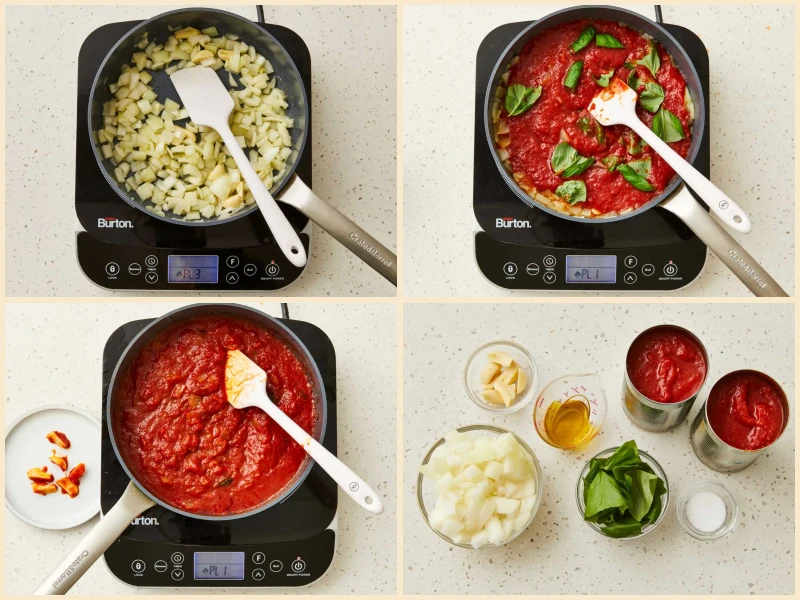

When it comes to Italian cuisine, there are few dishes as beloved as the humble sugo di pomodoro, or Italian tomato sauce. A perfect blend of ripe tomatoes, aromatic basil, and rich extra-virgin olive oil, this sauce is the foundation of many Italian meals, from pasta to pizza. Here we explore the history, regional variations, and cultural significance of this iconic sauce.
History of Sugo di Pomodoro
The origins of tomato sauce in Italy trace back to the early 16th century, when tomatoes were first brought to Europe from the Americas. Initially thought to be poisonous, tomatoes gradually gained popularity in Mediterranean cuisine, especially in Italy. By the 18th century, tomatoes had become a key ingredient in Italian cooking, particularly in the south, where the warm climate was ideal for growing them. The basic tomato sauce, or sugo di pomodoro, as we know it today, was refined over generations to become an essential component of Italian gastronomy.
Regional Variations
While sugo di pomodoro is ubiquitous across Italy, its preparation can vary by region. In southern Italy, especially in regions like Campania and Sicily, the sauce is often made with locally grown San Marzano tomatoes, known for their sweet flavor and low acidity. In contrast, northern Italy tends to favor a lighter, more delicate sauce, sometimes with the addition of butter or cream. In Tuscany, for instance, the sauce might be enriched with a splash of red wine or a pinch of rosemary. These regional differences reflect Italy's diverse agricultural heritage and culinary traditions.
How It Differs from Similar Dishes
Sugo di pomodoro is often confused with other tomato-based sauces, such as marinara or arrabbiata. However, what sets sugo di pomodoro apart is its simplicity. It is made with just a few ingredientsripe tomatoes, garlic, basil, and olive oilwithout the heavy seasoning or additions found in marinara or arrabbiata. While marinara might include onions, capers, or olives, and arrabbiata is spicier due to the inclusion of red chili flakes, sugo di pomodoro focuses on the pure, natural flavor of the tomatoes themselves.
Where It Is Typically Served
Sugo di pomodoro is incredibly versatile and can be paired with a wide range of Italian dishes. Most commonly, it is served with pasta, either as a main dish or a side. It is particularly popular with pasta types like spaghetti, rigatoni, and penne. The sauce can also be used as a topping for pizza, spread over dough before adding cheese and other toppings. Additionally, sugo di pomodoro serves as a base for other Italian specialties, such as gnocchi or eggplant parmigiana.
Interesting Facts
- In some parts of Italy, the tradition of making sugo di pomodoro is passed down through generations, with each family having its own "secret" recipe.
- Tomatoes were first introduced to Europe from the Americas in the 16th century, but it wasn't until the 18th century that they became a staple in Italian cooking.
- The San Marzano tomato, often used in sugo di pomodoro, is so prized that it has been granted Denominazione di Origine Protetta (DOP) status in Italy, which protects its authenticity and quality.
- Despite its simplicity, sugo di pomodoro is considered the "heart" of Italian cuisine, forming the base for many more complex sauces and dishes.
Conclusion
Sugo di pomodoro is not just a sauce; it's a symbol of Italy's rich culinary tradition. With its pure flavors and simple ingredients, it represents the essence of Italian cooking: fresh, local, and unpretentious. Whether youre using it for a classic pasta dish or spreading it on a pizza, this sauce is a timeless favorite that continues to bring the tastes of Italy into kitchens around the world.
FAQ about Sugo di Pomodoro (Authentic Italian Tomato Sauce) Recipe
Comments
Larry Adams
05/21/2025 10:45:42 PM
I found that using a carrot as a natural sweetener worked wonders in this recipe. You don't need a food processor as you can easily crush the tomatoes by hand or with a potato masher. Don't forget the oregano, preferably fresh, and if you have them, add a parmesan rind and an anchovy for that extra boost of flavor. Simmering for three hours is key to achieving the best results. This dish is truly unbeatable.
Kenneth White
09/23/2023 07:04:17 AM
As a first-generation Italian, I decided to give this recipe a try. It was decent, but it felt like it was lacking something - oregano. Oregano is a key ingredient in our sauce and gives it that authentic Italian flavor. Taste preferences vary, but I recommend using this recipe and keeping a jar of Italian seasoning on hand. Italian seasoning contains all the essential herbs and spices for Italian cuisine, making it convenient to use. Just adding a tablespoon of Italian seasoning can elevate your dish. For tasty Italian meatballs, try adding a packet of dry Good Seasons Zesty Italian Dressing per pound of ground beef. Skip the oil and vinegar and simply add the dry seasoning mix, then season to taste with salt and pepper, eggs, and breadcrumbs (or bread soaked in milk instead of breadcrumbs). Many struggle to make flavorful meatballs, even following a recipe. My own twist using the Zesty Italian Salad dressing mix was a game-changer. The meatballs turned out delicious without the need for precise measurements. I hope this tip helps someone looking to enhance their Italian cooking without the hassle of measuring ingredients.
Gregory Taylor
10/13/2023 08:43:27 AM
This recipe is fantastic! I added a piece of pancetta to the oil and garlic, along with some red pepper flakes to enhance the flavor. The end result was delicious. Thanks for the great recipe!
Stephanie Clark
01/06/2025 03:25:55 PM
I absolutely adore this sauce! It is incredibly simple to prepare and tastes divine! I swapped garlic cloves for 2 generous teaspoons of minced garlic, eliminating the need to fish out garlic pieces. Such a fantastic result! Many thanks!
Catherine Flores
05/24/2023 09:08:05 AM
Oh, I forgot to mention that I used fire-roasted tomatoes.
Christopher Thomas
02/07/2023 12:23:01 AM
The recipe was a bit tangy yet straightforward, and it turned out well. I plan to experiment by adding some sugar next time.
Angela Perez
02/12/2025 07:38:40 AM
Extremely authentic! I opted for whole peeled tomatoes instead of pre-chopped ones, which brought a delightful texture to the sauce. I crushed them by hand before adding them to the pot. Served over homemade pasta, the result was absolutely fantastic!
Edward Moore
10/22/2023 10:33:56 AM
Wonderful! This dish was easy to prepare and tasted fantastic. I included dried basil and a touch of bay leaves, which added some extra flavor.



